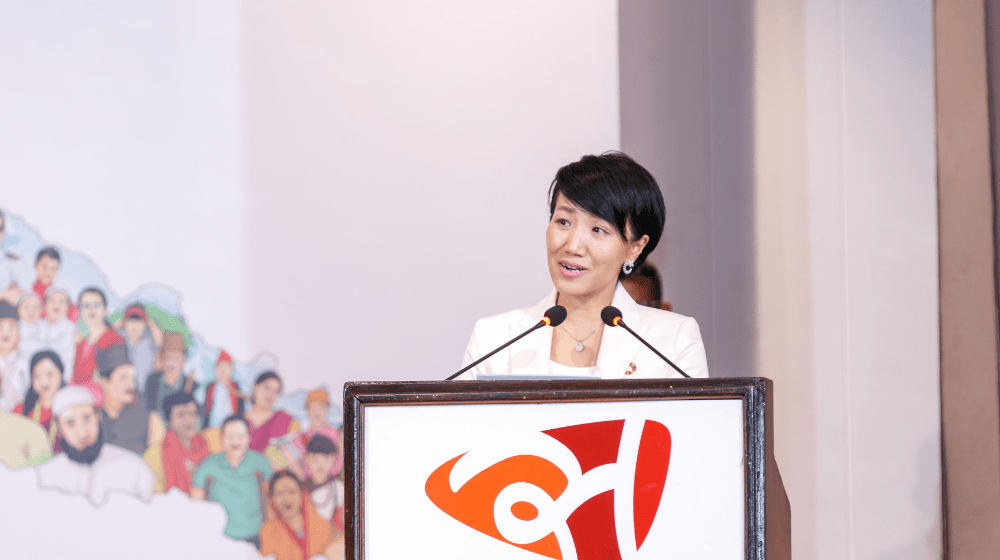The publication of key population and housing census data last week by the National Statistics Office points to a rapidly changing population in Nepal. Rapid shifts in urbanisation, migration, fertility, and families are all reshaping social and economic patterns in profound ways. Recording the lives of 29.2 million people in Nepal is a fascinating exercise, especially because of the speed of the advancements in the population being witnessed. The census, however, does not only give us a bigger picture of how a population lives. It is also a story about each of those 29.2 million individuals and how their lives are lived.
A declining population growth rate of 0.9 per cent and smaller household sizes suggest families are making different choices than previous generations. And trends such as an ageing population, increases in literacy to 76.3 per cent as well as many other indicators such as life expectancy for women, advances in healthcare, and improved maternal care all suggest people are living longer and healthier lives as a result of investments in the welfare of the population more broadly.
Why is this census so important?
Whilst many development challenges remain, the census is a crucial snapshot of these changes in population trends. It also provides a springboard for thinking more broadly about how data and population dynamics need to be an integral part of policy formation for the future and the transitioning period towards middle-income status in 2026.
Publication of this data means that for the first time in a decade, population and housing data, is available covering the entire country. This data will be instrumental in supporting evidence-based decision-making, key to budgeting, planning, and social service provision, and critical in the drawing or confirmation of electoral district boundaries and planning for future elections.
A need to understand population trends and support public policy with disaggregated data, including data on women and girls, is crucial to informing how decision-makers respond to shape future policies around a strong population evidence base. As more data and a series of thematic reports on areas of human development follow, this provides an unprecedented range of data on the population.
The timing of this census also coincides with the implementation of the new federal structure of Nepal, and this data will also allow greater insight into how these new structures play out with respect to population dynamics in society, the family, and the economy. In sum, this census data will allow us to make targeted investments, ensuring no one is left behind.
The importance of inclusion
Having access to disaggregated population data collected during the census is a starting point, not an end point, for realising the full potential of population data. As Nepal moves towards middle-income status, data and evidence will be crucial for the government, the market, and public services. This census data provides the master sample frame for data collection during inter-census periods and will be a central reference point for a whole range of other survey work during this crucial decade of development.
Over the coming months, more census data will be released, and it is important that this data be inclusive and accessible to the public so that it can be used to its full potential. Consultations organised by the National Statistics Office provide a solid basis for such inclusive policies. It is important that a strategy be in place to ensure there is an emphasis on the user and that users are empowered to use data in their everyday lives and in ways that can improve their lives. In this respect, I am very much looking forward to seeing over the next period an ever-increasing range of data on the population that reaches out to people—not only experts and policymakers, but also communities—so they can understand more clearly how data can actually improve their lives and how it can be used to engage their elected officials and interact with local authorities to advance development in their neighbourhoods.
Building on this data opportunity
The census should be seen as a milestone, and although it is a crucial one, there is a vital need to continue to invest in system strengthening so that the overall data ecology is more closely integrated and fulfils its true potential.
According to the World Bank’s Statistical Capacity Indicator Dashboard, Nepal is in the second quintile of groups of nations in terms of the capacity to collect, analyse, and disseminate high-quality data about its population and economy. This needs to be strengthened over time, which includes both utilising existing resources that are available as well as maximising how these are used and integrated.
The visualisation platform introduced by the National Statistics Office is a very good basis for growing this data culture and broadening the range of data available for users and development decisions. It is crucial, however, that there are also plans for medium-term outcomes in how the overall statistical
system develops.
It is important that a system maximise the utility of data from not only censuses and other surveys but that it is also able to draw on data from multiple sources, including administrative data. It is essential that the National Statistics Office continue to champion data, and collectively we start to think about data integration and ways data generated by a wide range of ministries and bodies is integrated and interoperable between systems to realise the full potential of population data.
Young Hong is the Resident Representative, UNFPA
The British Embassy in Kathmandu, the Swiss Agency for Development and Cooperation and UNFPA jointly provide support to the National Statistics Office in the delivery of the 2021 census.


